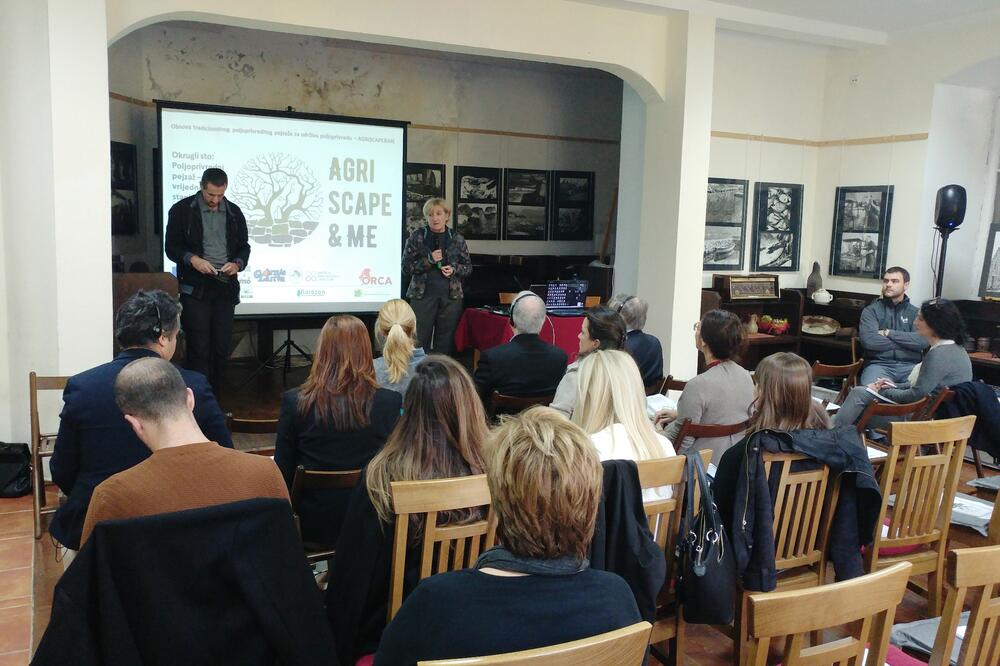A round table on the topic "Agricultural landscape - values, state and challenges" was held yesterday in Gornja Lastva near Tivat, as part of the AGRISCAPE&ME project.
In the inspiring ambience of this old Bokelje village on the slopes of Vrmac, a large number of participants gathered - agricultural and spatial planning experts, environmental and cultural heritage protectionists, representatives of state and local administration and the NGO sector. In addition to others, the meeting was attended by the Montenegrin Prince Nikola II Petrović Njegoš, representatives of the Secretariat for Nature Protection and the Secretariat for Urban Planning of the Municipality of Tivat, the Ministry of Agriculture and Rural Development, the Biotechnical Institute, the Agency for Development and Protection of Orjen, the Olive Society "Boka", Network for the rural development of Montenegro, as well as experts from Croatia and France.
By the way, the goal of the AGRISCAPE&ME project, which is financed from European funds, is to contribute to the development of sustainable agriculture by advocating for the restoration, preservation and improvement of the traditional agricultural landscape as part of the overall cultural landscape. The project started in April of this year and will last 12 months, and it is implemented by the NGO Expeditio Center for Sustainable Spatial Development from Kotor, the Cultural Native Association "Napredak" from Gornja Lastva and the Olive Society "Boka" from Tivat.
"Agricultural landscapes are part of the overall cultural landscape and cultural heritage. Currently, we do not have a single cultural landscape protected in Montenegro, and in our community there is not enough awareness of the importance of agricultural landscapes as economic, but identity categories for an area in the country," said the architect-conservator at the NGO Expeditio Aleksandra Kapetanović, adding that traditional olive groves, vineyards, arable fields, salt fields, batunices, katuns, often disappear in the face of growing urbanization or are neglected and left to wild nature.
The representative of the Ministry of Agriculture and Rural Development, Dubravka Radulović, spoke about the strategic decisions of the development of agriculture in our country and the treatment of agricultural landscapes in it, while Biljana Lazović from the Faculty of Biotechnology drew attention to olive growing as an example of a harmonious landscape.
The round table discussed the treatment of agricultural landscapes in the spatial planning of Montenegro, experiences in the revitalization of traditional Adriatic agricultural and cultural landscapes in Croatia, maintaining agricultural landscapes with renewable energy sources based on practical examples in France, the role of the local community in the preservation and restoration of olive groves, and Prince Nikola Petrović spoke on the subject of the agricultural landscape and the potential of untouched nature on the Vrmac hill.
Bonus video:





